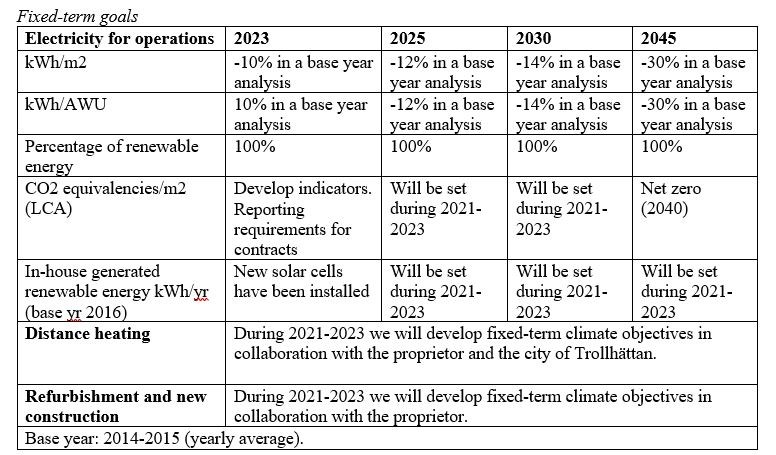Campus and real estate issues
The university’s goal is to create a green and sustainable campus, where there are many green areas and where the campus is sustainable in terms of our consumption and production of energy as well as prudent, innovative resource and material usage (Campus Plan 2030).
Our focus on reducing the impact we have on the climate is to reduce our consumption of energy and reduce our impact on the climate when refurbishing and constructing new buildings.
Objective: The university’s consumption of energy will be climate neutral by 2030 and reduced by at least 30 per cent per square meter and employee by 2045 in a base year analysis.
To achieve this goal, the university together with the proprietor will work on energy optimisation in the existing buildings and when refurbishing and constructing new buildings, make demands for renewable energy and low energy consumption when signing procurement contracts, gradually replace electric equipment with the highest energy efficiency class, based on a life-cycle perspective and work on improving communication as a way of achieving changes in behaviour that will save energy.
Objective: The university’s refurbishment and new construction projects will be climate neutral by 2045 and the buildings constructed up until then will be of the highest environmental standard.
Refurbishing existing buildings and constructing new ones is not always included in climate-smart planning that is done for the higher education sector, but we know that in the life cycle of a building, emissions are greatest during the construction process. This is why it is important that we work with the proprietor to reduce our carbon footprint in this phase. Furthermore, it is important that a new building have a high environmental standard since that reduces the impact on the environment and our carbon footprint made by our operations in the buildings, such as the consumption of energy. A sustainable approach to building construction is therefore to pay more rather than try to save money during the process of construction, since it is more expensive and more harmful to the environment to modify the building afterwards. This is an appropriate strategy for reviewing our model of financing refurbishment and new construction and ensuring that specific funding has been earmarked for incurring a relatively large expense today as a way of avoiding an even larger economic/ecological cost in the future.

Contact



